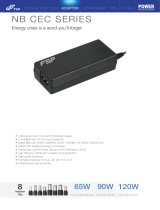
Before using your new recorder, read this manual
carefully to ensure that you know how to operate
it safely and correctly. Keep this manual in an
easily accessible location for future reference.
• The warning symbols indicate important
safety related information. To protect yourself
and others from personal injury or damage to
property, it is essential that you always read the
warnings and information provided.
Safe and proper usage
f Danger
If the product is used without observing
the information given under this symbol,
serious injury or death may result.
f Warning
If the product is used without observing
the information given under this symbol,
injury or death may result.
f Caution
If the product is used without observing
the information given under this symbol,
minor personal injury, damage to the
equipment, or loss of valuable data may
result.
Convention used in this manual
• The word “card” is used to refer to the SD card.
• The word “DSS Player” is used to refer to
the DSS Player Standard Dictation Module
in Windows environment and DSS Player in
Apple Macintosh environment.
• The Notes at the bottom of a page are used for
additional information, exceptions, or related
events.
• Words in uppercase form such as PLAY or REC
are used to describe a function or button on
the recorder.
Caution for usage environment
• To protect the high-precision technology
contained in this product, never leave the
recorder in the places listed below, no matter
if in use or storage:
• Places where temperatures and/or humidity
are high or go through extreme changes. Direct
sunlight, beaches, locked cars, or near other heat
sources (stove, radiator, etc.) or humidifiers.
• Near flammable items or explosives.
• In wet places, such as bathrooms or in the rain.
• In places prone to strong vibrations.
• Never drop the recorder or subject it to
severe shocks or vibrations.
• The recorder may malfunction if it is used in
a location where it is subject to a magnetic/
electromagnetic field, radio waves, or high
voltage, such as near a TV set, microwave,
video game, loud speakers, large monitor unit,
TV/radio tower, or transmission towers. In such
cases, turn the recorder off and on again before
further operation.
• Avoid recording or playing back near cellular
phones or other wireless equipment, as they
may cause interference and noise. If you
experience noise, move to another place, or
move the recorder further away from such
equipment.
• Do not use organic solvents such as alcohol
and lacquer thinner to clean the unit.
Warning regarding data loss:
• Recorded content in memory may be destroyed or
erased by operating mistakes, unit malfunction, or
during repair work. It is recommended to back up
and save important content to other media such
as a computer hard disk.
• Any liability for passive damages or damage of
any kind occurred due to data loss incurred by a
defect of the product, repair performed by the
third party other than Olympus, an Olympus
authorized service station or any other reason is
excluded from the Olympus liability.
EN
5





















